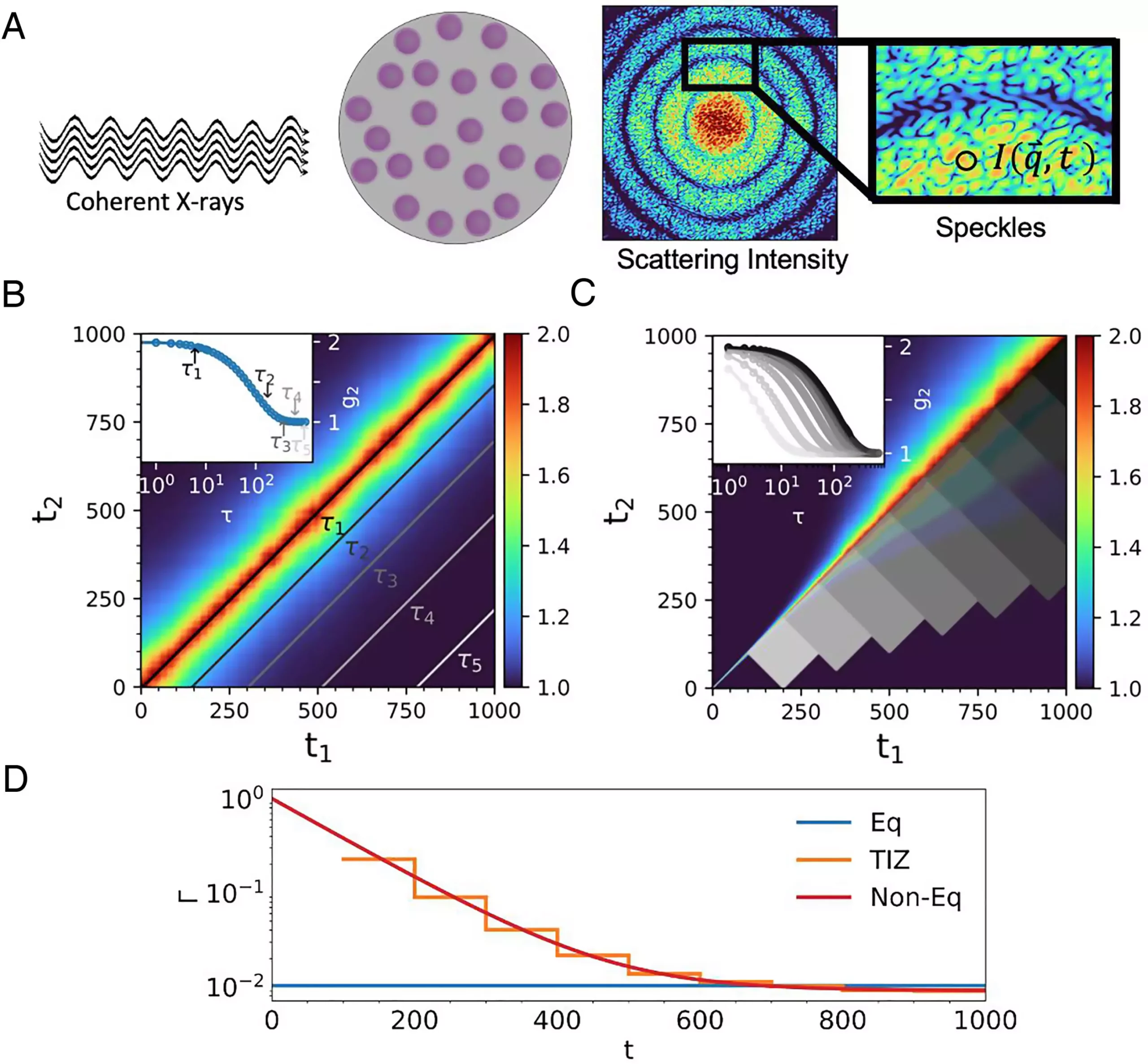For nearly seven decades, Play-Doh has captured the imagination of children worldwide with its vibrant colors and malleable texture. This beloved modeling compound, though primarily associated with play, illustrates a broader scientific category known as soft matter. Soft matter encompasses a variety of substances characterized by their ability to deform easily under applied forces, including not just modeling clay but also everyday items like mayonnaise, paints, and even the gels used in 3D printing. The properties of these materials remain the focal point of an exciting new study led by researchers from the U.S. Department of Energy’s Argonne National Laboratory and the Pritzker School of Molecular Engineering at the University of Chicago.
At the core of this research lies an ambition to better comprehend the flow dynamics of soft matter at an atomic scale—what scientists refer to as the nanoscale. These materials display behaviors that are sensitive to various external influences such as temperature variations, mechanical stress, and chemical interactions. In this context, Matthew Tirrell, a prominent figure in the field, provides valuable insights by equating the behavior of soft matter to that of paints during application. The challenge in using such materials effectively, as Tirrell notes, hinges on controlling their flow properties, particularly once the application has ceased.
The implications of mastering these complex flow behaviors extend far beyond craft and creativity. They point towards significant advancements in multiple fields, including construction, medicine, and environmental science. This newly developed technique, grounded in cutting-edge technology, aims to decode the nuanced movements of soft matter nanoparticles when subjected to external forces, thereby paving the way for breakthroughs in their applications.
Revolutionizing Data Analysis with X-ray Techniques
The researchers’ approach employs an advanced methodology called X-ray photon correlation spectroscopy (XPCS), a technique that allows for the observation of nanoscale fluctuations over time. Traditionally, experiments utilizing XPCS involved averaging large amounts of data, which often led to the omission of critical information pertaining to the nuanced processes occurring within soft matter. However, this research team has innovated a method to extract more detailed data, which captures the interactions and flow behaviors of nanoparticles effectively.
According to HongRui He, the graduate student leading the study, this innovative technique ushers in a new era of understanding for the transport coefficient—a crucial measurement that characterizes the mobility of materials. As they gathered data using a specialized X-ray beam from the Advanced Photon Source (APS) at Argonne, the researchers were able to assess how these soft materials respond to mechanical and thermal stimuli more accurately than ever before.
Experimentation That Matters: Insights and Discoveries
In their experimental setup, the research team introduced a complex soft material composed of charged particles mixed within a salt solution, simulating real-world conditions. They applied shearing—a common phenomenon that occurs when substances like lotion are manipulated—to examine how this force influenced the flow properties of the material. The findings uncovered distinct bands of nanoparticles demonstrating varied movement—some fast, some slow, and others remaining stationary.
Remarkably, these observations revealed that dynamics at the nanoscale are strikingly intricate; the fast-moving particles disappeared after 15 seconds before returning later in the experiment. Such detailed insights on the behavior of soft matter during shearing are unprecedented and highlight the potential of the XPCS technique to penetrate deeper understanding of particle interactions and flow behaviors.
The implications of this breakthrough research extend beyond the laboratory, potentially aiding in our understanding of various natural phenomena such as landslides and the progression of arterial plaque. By deciphering the fluctuations in flow at the nanoscale, scientists may predict larger-scale changes in these processes, thus informing preventive strategies in both medicine and environmental management.
As advancements continue, the APS is set to undergo an upgrade that will enhance the brightness of its X-ray beams, greatly enhancing the potential for future XPCS applications. With new beamlines dedicated to this research opening later in 2024, the horizons for exploring complex soft matter are expanding. The team’s synergy between theoretical insight and high-tech experimentation embodies a bright pathway for innovations in diverse fields that hinge upon understanding the fundamental principles governing soft matter behavior.

